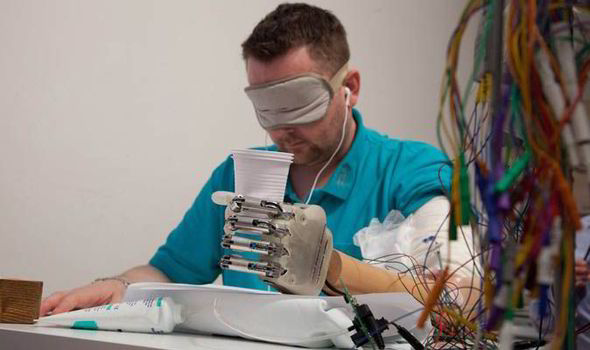Bionics and augmentation have been progressing slowly but with great certainty, and the latest advance, while still not commercially viable, is bound to raise the bar in as far as bionic, robotics and physical augmentation. Prosthetic limbs have become a technically complex, functional and socially acceptable form of augmentation for the disabled, but one ability has been conspicuously missing – the ability to touch.
This is bound the change with the invention of the LifeHand 2, a prosthetic hand that infers the ability to feel rudimentary shapes and forms by touch.
LifeHand 2 was developed by an European research team made up of Italian and Swiss scientists.
The first test subject was Dennis Aabo Sorensesn, he lost his hand during a New Year’s party as a firework rocket exploded while he was holding it. For ten years Dennis had no feeling in his hand, but with the invention of LifeHand 2 he could use touch to identify basic object shapes like the shape of a bottle, or sense the difference between a fruit and a baseball as far as softness.
While conventional prosthetic can only detect muscle movement, LifeHand 2 functions by implanting extremely thin electrodes into the nervous system of the arm, which are then attached to the robotic hand. This allows for sensory feedback, although at this stage it is very rudimentary. Other sensations such as the difference between hot and cold as well as more complex textures are beyond LifeHand 2 at this moment.
As far as the issues facing LifeHand2 and its implementation, the first one is getting it out of the lab and into the market. One of the lead scientists on the project. Professor Silvestro Micera, director of the Translational Neural Engineering Laboratory at the Ecole Polytechnique Federale de Lausanne, claims the next level is to make sure that LifeHand 2 could stay implanted in multiple patients for "many months". Though not extremely expensive, it could take several years for the equipment to be resized enough to be viable for everyday use.
Read more Reuters and The Guardian.
Image from express.co.uk
Related post: The Artificial Touch-Sensitive Hand

Share your thoughts and join the technology debate!
Be the first to comment